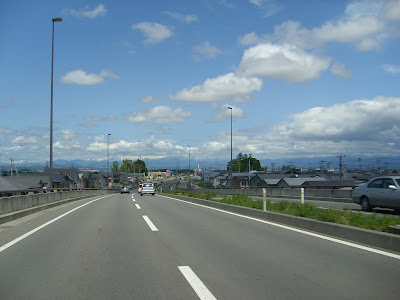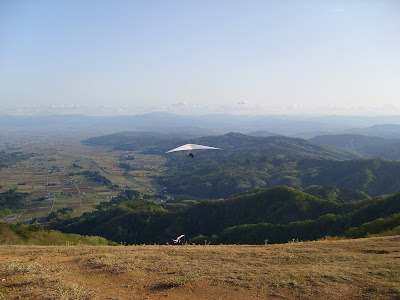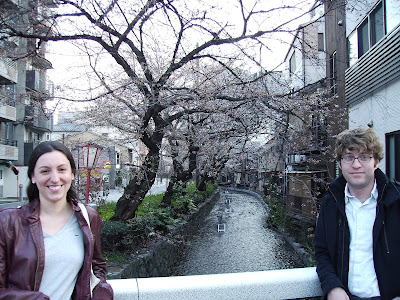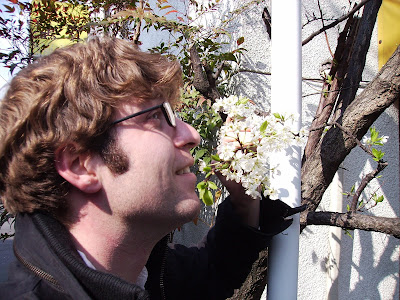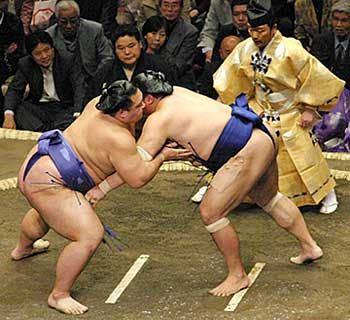
Last weekend a group of friends and I went to Tokyo to experience some things very unique to Japanese culture. We went to see sumo and kabuki! If you don’t know what Kabuki is, well neither did I when I got here. If you don’t know what sumo is,… where did you grow up? Everybody knows what it is right? However, even after going and watching it for myself, in Japan, in Tokyo, I am still not understanding everything that is involved. Two men enter a ring; usually they are very fat and also quite strong. These men rely not only on physical strength, but physics as well. Often a man is beaten because he will throw himself at his opponent attempting to knock them out of the ring and the opponent will dodge the blow and let moment carry his opponent to defeat. Being out of the ring, or putting a knee or hand down signals the end. The ring is actually a raised square of compacted sand with a circle on top of it. The wrestlers will mount the square and then they will proceed to go through a ritual of expelling evil spirits and purifying the ring. Apparently this involves slapping their chest, throwing salt into the ring, and stomping on the ground. The crowd cheers their favorites. Then the two men engage in combat for a few brief moments and the whole thing is over. I saw the number one wrestler in the world, needless to say, it was quite special and I can’t wait to go again. In fact, my school has a small team that I may try a practice with. I'm really pumped about sumo.
Kabuki was a different story. Kabuki is a traditional Japanese theater. When I told my Japanese teachers there response was something like, "oh, ... uh, no, havent seen it, uh... you might be bored?" When I heard this I thought to myself, it can’t be that bad, it’s an experience of culture, I can bear it. I fell asleep during the first act and at that point remembered that I do not really like theater. I also recounted how I fell asleep in Beijing while watching traditional theater there. However, my friends liked it and so my feelings were not shared by all. I have also since heard of a different troupe of Kabuki actors whose plays involve modern Japanese language, without drawn out dialogue, and more fight scenes. Perhaps I will give Kabuki one more try.
Check this link for my friend Brian’s video which of course has me in it. http://www.youtube.com/watch?v=gcZ6eOc5_Qc or just check Youtube and search for brianadler. This video is done by National Geographic and is of much better quality. http://www.youtube.com/watch?v=UxhKb-zZoWE&feature=related
Or follow this link to footage of the champ in action http://www.youtube.com/watch?v=CEe-UIvftUg&NR=1

